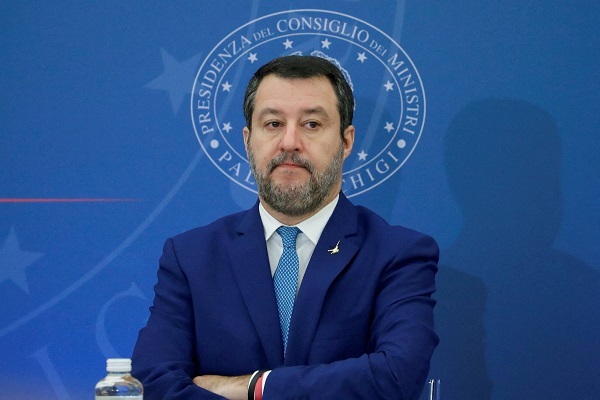Italy’s Far-Right Party Faces Scrutiny Over Islamophobic AI-Generated Images

The complaint, filed with Italy’s communications regulator Agcom on Thursday by members of the Democratic Party and the Greens and Left Alliance, accuses the League of disseminating content containing multiple forms of hate speech through its social media platforms.
Over the past month, numerous AI-generated images were posted on the League’s official accounts, depicting people of color — often armed — in violent or criminal scenarios.
According to Democratic Party Senator Antonio Nicita, the visuals target immigrants and Arabs, portraying them as threats to public safety. He said the party used artificial intelligence “to construct narratives that link certain ethnic or religious groups with criminal behavior.” He also criticized the decision to blur victims’ faces, arguing it created the illusion that the images were authentic.
Emilio Borrelli, a parliamentarian from the Greens and Left Alliance, described the content as a tool for “instilling fear and encouraging hatred,” echoing concerns that such messaging may contribute to the radicalization of public opinion.
Read More:
A League spokesperson acknowledged that some images were digitally generated but defended the party’s actions, claiming the posts were rooted in actual news stories. “The point is not the image. The point is the fact,” the spokesperson said, asserting that the depictions aligned with real incidents reported in Italian newspapers.
However, digital imaging experts have contested that explanation. Forensic analysts noted that the visuals bear hallmark signs of AI manipulation, and despite EU content guidelines, many of the images lacked proper labeling as synthetic media.
One specific image flagged in the complaint shows a couple in Islamic attire appearing to berate a child — a portrayal that critics argue perpetuates Islamophobic tropes. The news article cited in the accompanying caption, however, reportedly makes no mention of religion or includes any relevant photographs.
Read More:
The controversy arises amid a broader trend across Europe, where far-right groups are increasingly employing AI-generated imagery to bolster anti-immigration narratives. These tactics often mirror conspiracy theories such as the “Great Replacement,” which falsely claims that immigration is a coordinated effort to undermine European culture.
Source: Agencies



